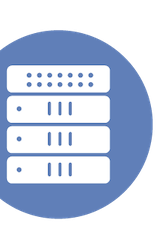|
|
This video is part of the appearance, “Intel Memory and Storage Moment Tech Field Day Presentations“. It was recorded as part of Tech Field Day Exclusive with Intel Memory and Storage at 11:00-12:30 on December 16, 2020.
Watch on YouTube
Watch on Vimeo
Kristie Mann, Senior Director, Product Management discusses the application of Intel Optane technology in the Persistent Memory tier. This technology is used in high-end servers such as Oracle Exadata, high-performance computing (HPC) exemplified by Intel’s DAOS, and big memory as with MemVerge software. Oracle Exadata X8M ships with Intel Optane Persistent Memory (PMEM) today and the system has been optimized to use it as a new data tier to accelerate database commits. Intel’s open source Distributed Asynchronous Object Store (DAOS) leverages Intel Optane Persistent Memory technology as a hot data tier for small I/O operations and metadata to deliver an order of magnitude better performance than other object stores. Finally, companies like MemVerge are using Intel Optane Persistent Memory technology to deliver “big memory” to existing applications with in-memory snapshots and persistence.
Next, Kelsey Prantis, Senior Software Engineering Manager, gives details of how the DAOS software uses Intel Optane Persistent Memory to set records for performance. Block I/O limits storage performance in today’s enterprise storage solutions, with misaligned I/O and small I/O lining up to be serialized, reducing performance. DAOS uses Intel Optane Persistent Memory to store these small I/Os, delivering record-setting performance in the ISC20 IO500 competition. Using second-generation Persistent Memory, DAOS is showing a 58% improvement in write bandwidth and 5% more read bandwidth. Prantis and Mann also take questions from the Tech Field Day delegates and discuss the application of this technology.
Personnel: Kelsey Prantis, Kristie Mann









